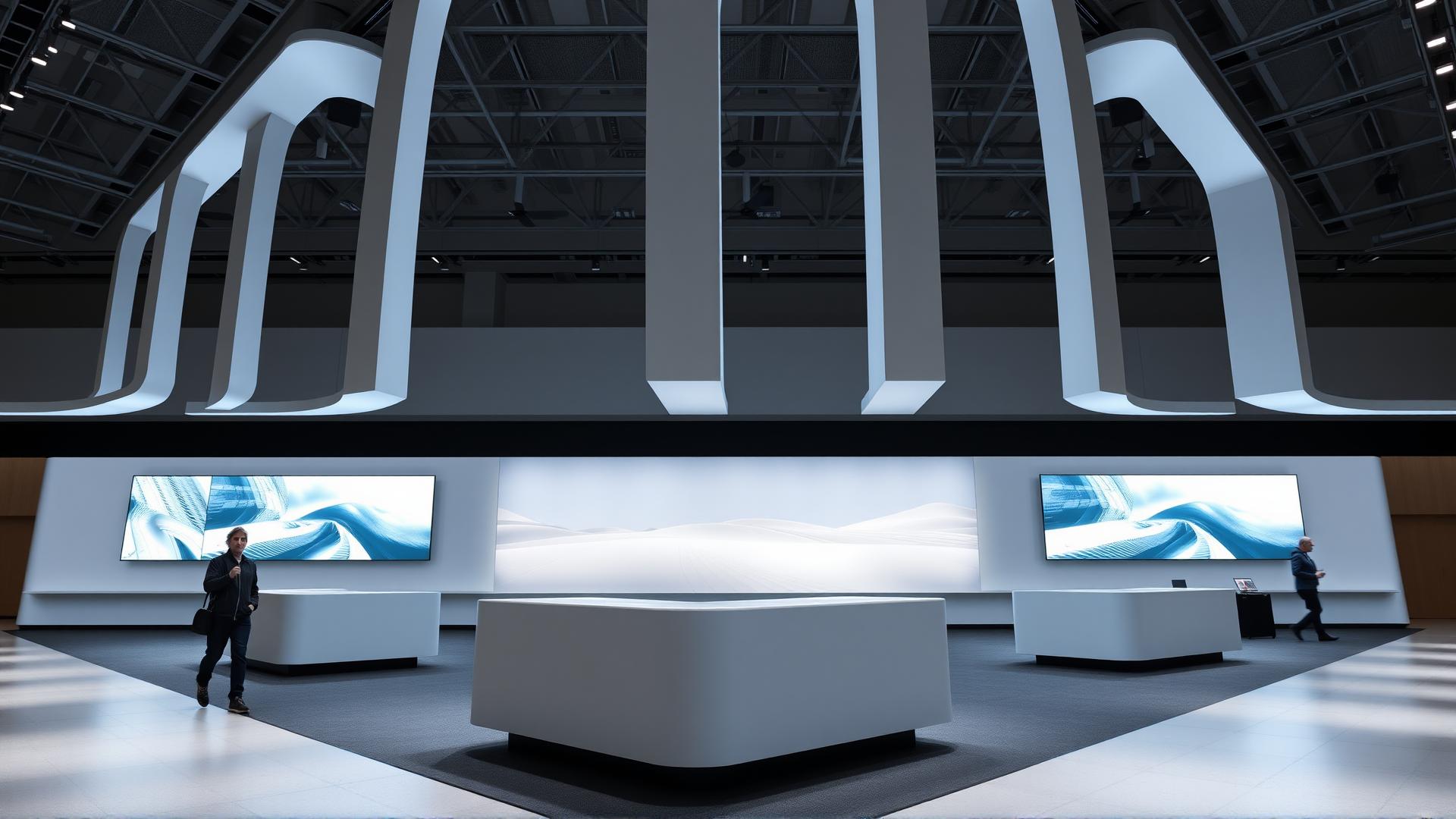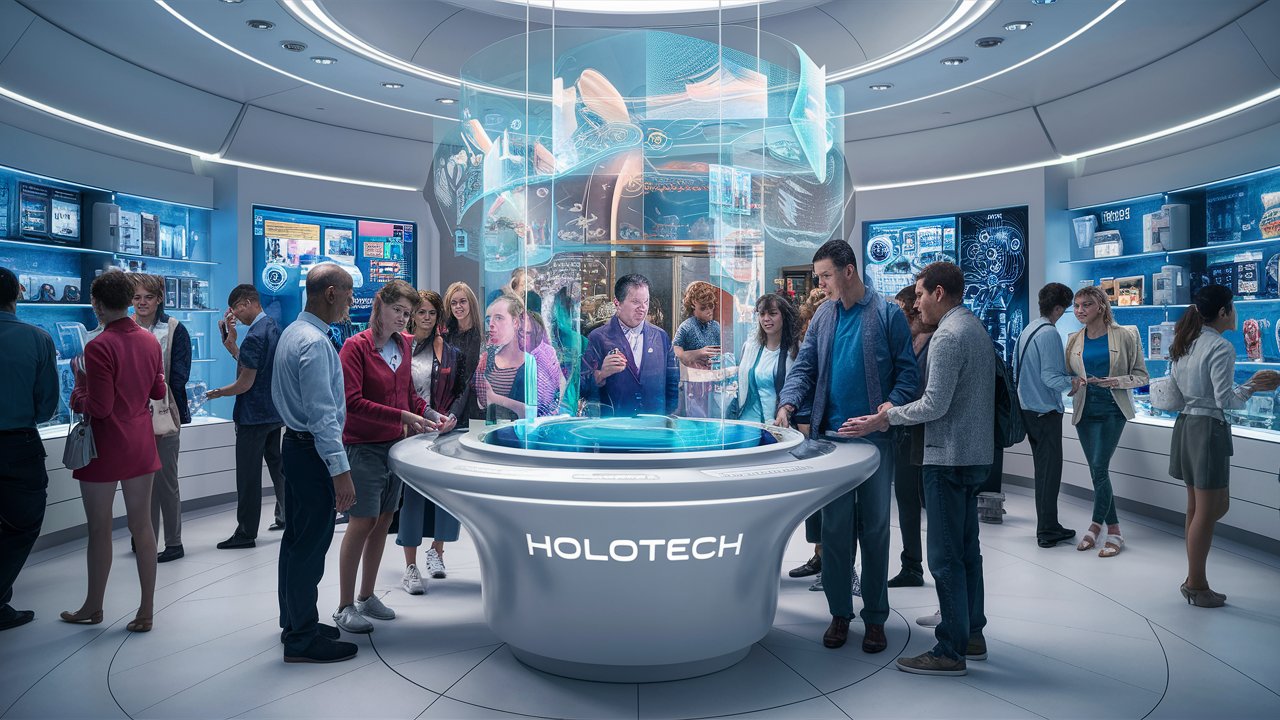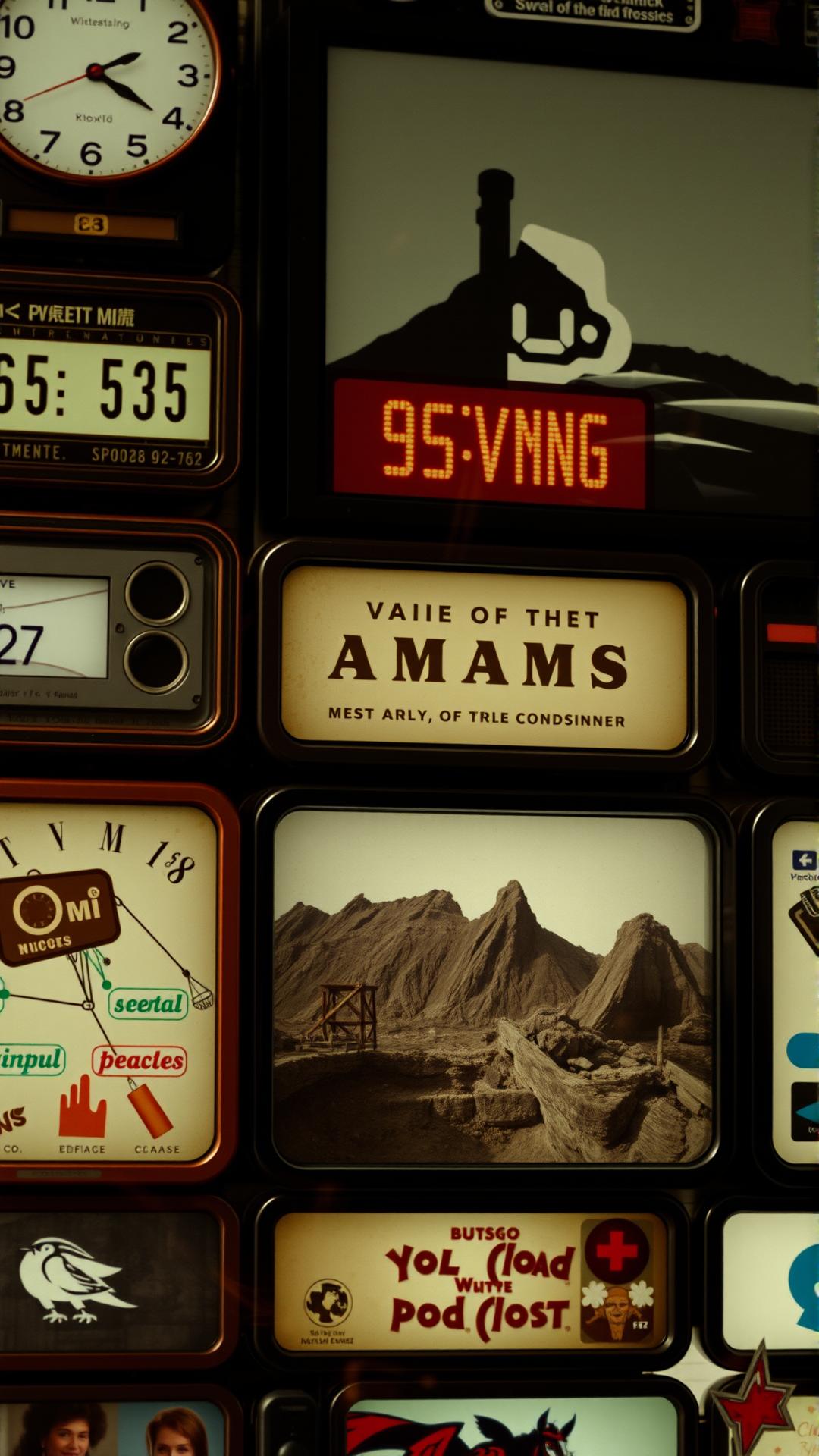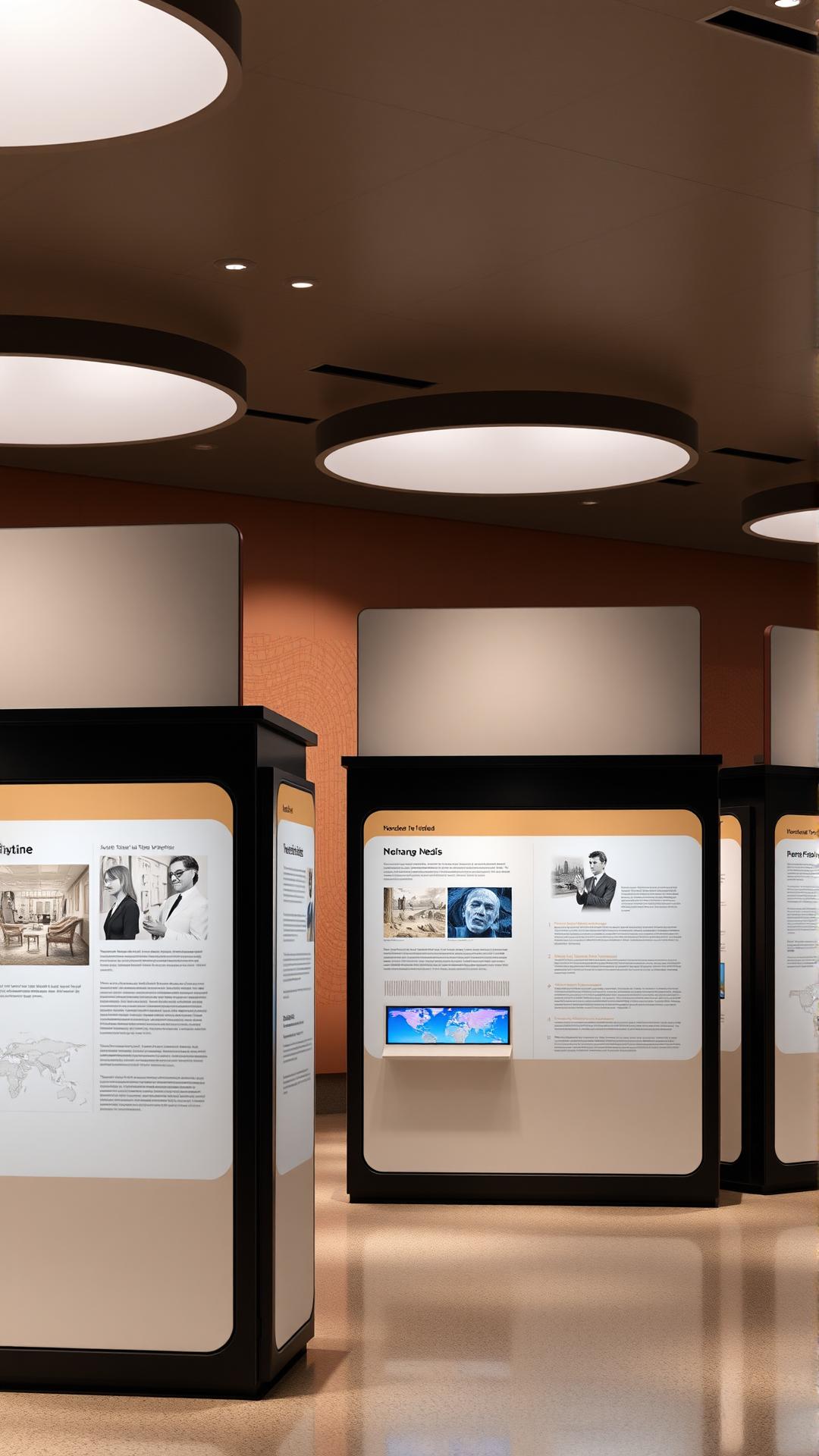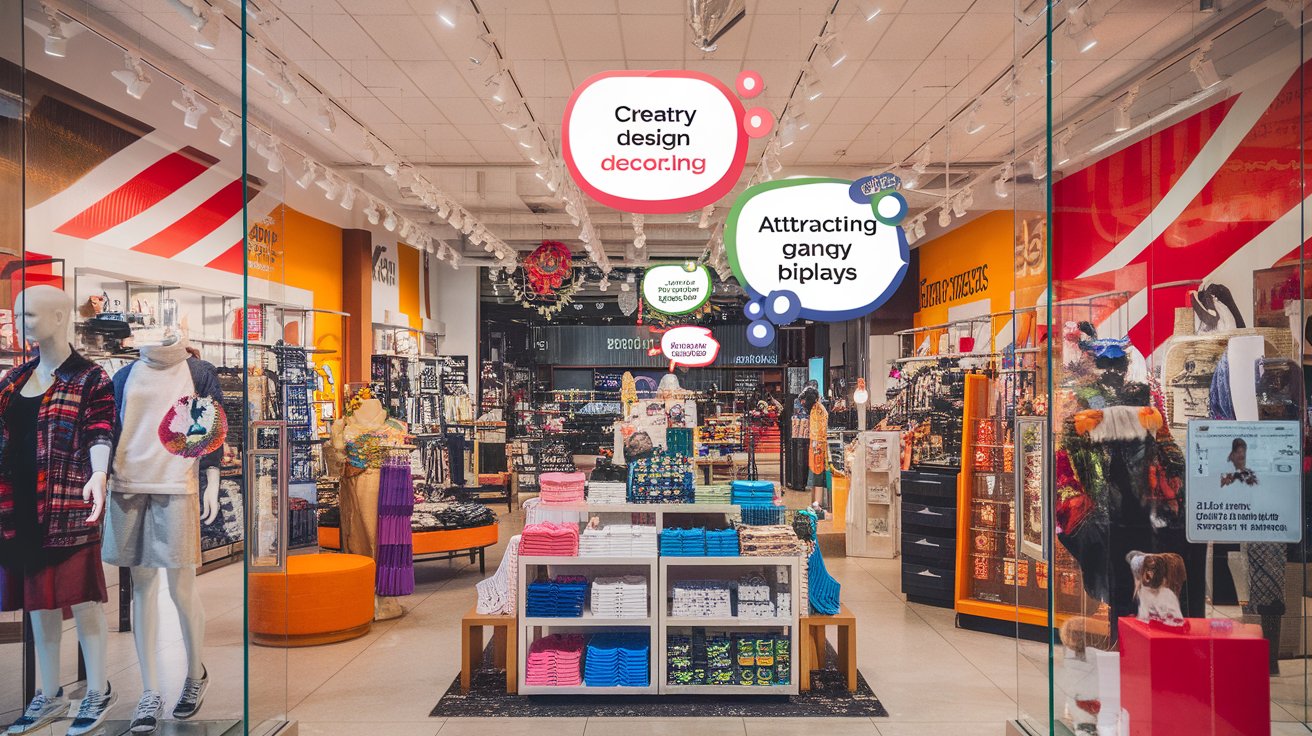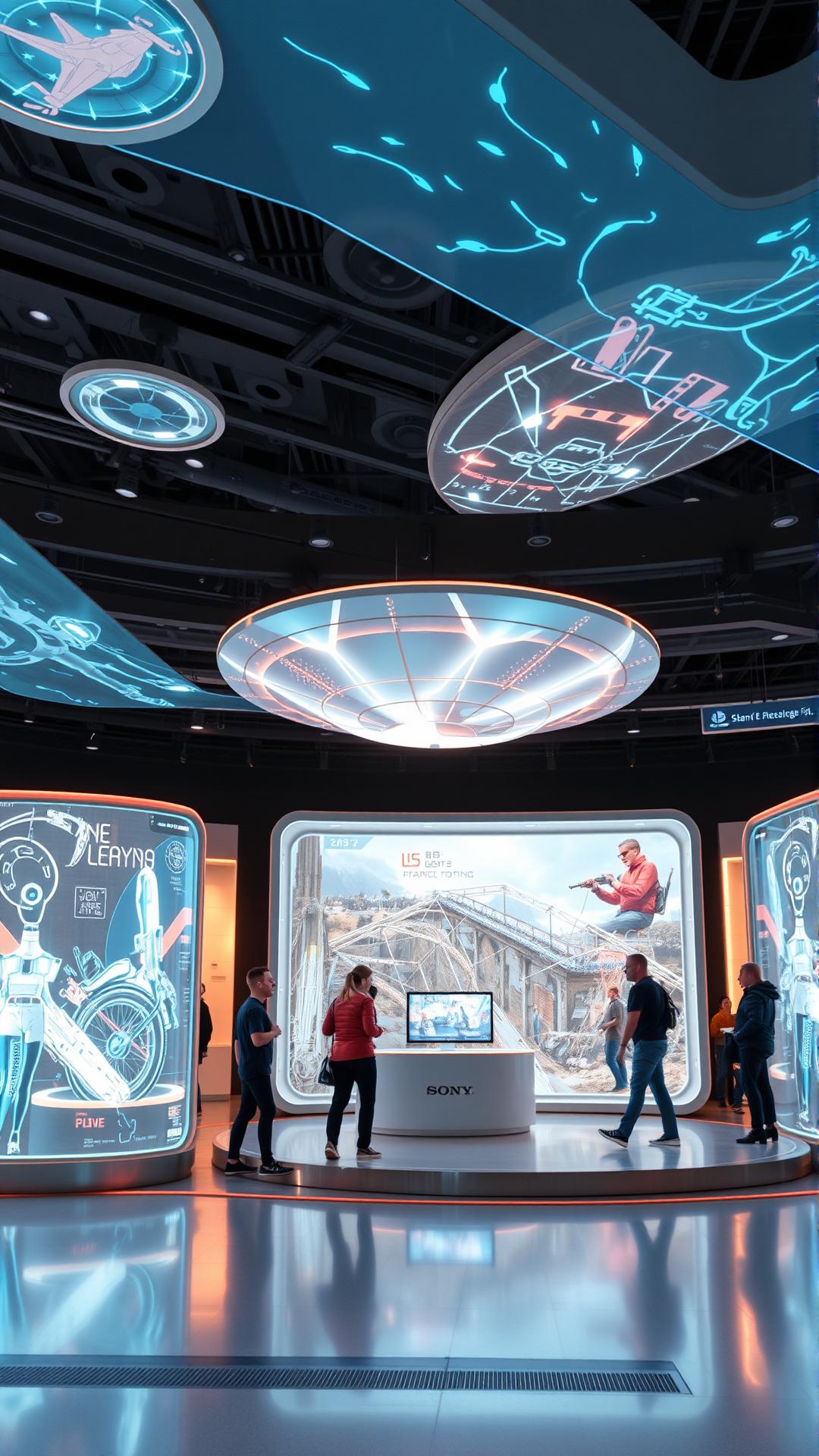Introduction
Exhibition design is an art and science that blends creativity with strategic thinking to create engaging and educational experiences for visitors. This field encompasses various disciplines, including architecture, graphic design, and content development, all while aiming to communicate a cohesive narrative within a three-dimensional space. The importance of effective exhibition design cannot be overstated, as it significantly influences how audiences interact with and understand the information presented to them. Whether in museums, trade shows, or thematic attractions, the design process involves careful consideration of space, materials, and the messages conveyed through exhibits.
We will explore a range of modern exhibition design ideas that can enhance showcases across different contexts. From immersive environments that draw visitors in to innovative display techniques that highlight artifacts, we will uncover strategies that not only attract attention but also facilitate learning. By examining influential trends and successful case examples, readers will gain insights into creating impactful exhibitions that resonate with diverse audiences while maintaining a focus on storytelling and engagement.
The Evolution of Exhibition Design: A Historical Perspective
Exhibition design has undergone a remarkable transformation, influenced by cultural, technological, and societal changes throughout history. Early exhibitions, dating back to ancient civilizations, were primarily utilitarian, showcasing goods and artifacts for trade and commerce. The Romans, for instance, organized exhibition-like events that combined art and commerce, setting the stage for a more formalized approach to showcasing.
During the Renaissance, the focus shifted towards art and culture. The establishment of museums in the late 17th and early 18th centuries marked a significant turning point. Institutions such as The Louvre and The British Museum began to curate collections, leading to the professionalization of exhibition design. This period emphasized the aesthetic arrangement of objects, allowing viewers to engage with art in a new way. Exhibition spaces began to incorporate themes, creating environments that reflected the cultural zeitgeist.
As the 19th century approached, the Great Exhibitions, notably the Crystal Palace in 1851, became pioneering examples of modern exhibition design. These large-scale events showcased industrial advancements and cultural achievements. The architectural innovation of the Crystal Palace itself was a precursor to contemporary exhibition spaces, combining functionality with artistic expression. These exhibitions also introduced the concept of storytelling, where objects were placed within narrative contexts to educate and immerse visitors.
The rise of technology in the 20th century further revolutionized exhibition design. The integration of multimedia elements, such as film and interactive installations, became prevalent. Designers began to focus on user experience, considering how space, lighting, and sound could enhance visitor engagement. This evolution mirrored shifts in society, as audiences became more accustomed to dynamic and immersive experiences.
Contemporary exhibition design continually adapts to the digital age, where virtual exhibitions and augmented reality are re-defining the boundaries of physical spaces. Innovative approaches now prioritize sustainability and inclusivity, emphasizing the importance of engaging diverse audiences. The historical journey of exhibition design highlights a persistent striving for relevance, creativity, and accessibility, shaping exhibitions that not only inform but also inspire.
Crafting Engaging Narratives in Exhibition Design
Principles of Storytelling in Exhibit Spaces
Exhibition design transcends mere aesthetics; it is about narrating a story that resonates with its audience. Central to effective exhibition design is the integration of storytelling, which forges emotional connections, sparking curiosity and inviting deeper exploration. Employing principles of narrative structure—such as a clear beginning, middle, and end—helps in structuring the content within an exhibition, guiding visitors through the intended experience.
One principle vital in this realm is the creation of immersive environments that transport visitors to different contexts or eras. Designers can utilize soundscapes, lighting, and visual elements to evoke specific feelings or memories, enhancing the capacity of space to tell a story. This approach not only captivates the audience’s attention but also fosters retention of the information being presented.
Enhancing Audience Engagement Through Interactive Elements
Interactive components serve as pivotal storytelling tools in modern exhibition design. By inviting visitors to engage with exhibits actively, designers can transform passive viewers into participants. It can range from touch screens providing additional information and augmented reality overlays to tactile experiences that appeal to various senses. An interactive experience allows individuals to carve their path through the narrative, personalizing their journey and fostering a more profound connection with the subject matter.
Layering narratives can effectively cater to diverse audience groups. Utilizing multiple storytelling techniques—such as visual displays, text panels, and audio—permits visitors to choose their mode of engagement. For instance, a younger audience might favor audiovisual content, while older visitors may prefer in-depth textual analysis. By accommodating various learning styles, exhibitions become more inclusive, ultimately enhancing the overall visitor experience.
The significance of feedback in the storytelling process cannot be overlooked. Gathering visitor impressions and insights can provide valuable information for future designs, ensuring that narratives evolve to meet audience expectations. As the exhibition landscape continues to advance, these insights will be crucial in refining approaches and engaging audiences more effectively.
Innovative Display Techniques: Redefining Exhibition Experiences
Transformative Methods in Exhibition Design
As the landscape of exhibition design continues to evolve, innovative display techniques play a vital role in enhancing how exhibits are both showcased and interacted with. The shift towards immersive and dynamic experiences has led to the adoption of advanced technologies and novel approaches that transcend traditional display methods. These techniques not only captivate visitors but also foster deeper connections with the content presented.
One of the most significant advancements in exhibition design is the integration of augmented reality (AR) and virtual reality (VR). These technologies allow visitors to engage with exhibits in a manner that was previously unimaginable. For instance, AR can overlay digital information onto physical objects, enriching the narrative by providing additional context or interactive features. Visitors can use their smartphones or AR glasses to see historical figures come to life or experience events from different perspectives, creating a multi-dimensional understanding of the exhibit.
Another cutting-edge display method is the use of interactive projections. By turning entire walls or floors into interactive canvases, exhibitions invite visitors to engage directly with the content. Gestural recognition technologies can allow participants to manipulate visual elements or trigger animations, encouraging exploration and playfulness. These projection systems often include soundscapes and sensory elements, transforming the space into an engaging environment where the audience becomes an integral part of the exhibit.
Modular display systems are also gaining prominence, allowing for flexibility in exhibition layouts. These systems enable designers to reconfigure spaces according to varying themes or audience needs. Such adaptability not only enhances the visual appeal but also sustains visitor interest over time, as each rearrangement offers a fresh perspective on the content.
The importance of tactile elements cannot be underestimated. Incorporating materials that invite touch appeals to a fundamental human sense, enhancing the visitor’s overall experience. Textured displays, interactive elements, and movable artifacts encourage participation and foster a sense of ownership among audiences, leading to more memorable encounters.
The incorporation of innovative display techniques is vital for crafting exhibitions that resonate with contemporary audiences. As designers embrace these progressive methods, they redefine how narratives are constructed and experienced in exhibition spaces, making them more relevant and engaging for today’s diverse visitors.
Audience-Centric Design Approaches: Enhancing Visitor Interaction within Exhibitions
Understanding Visitor Needs and Expectations
In exhibition design, prioritizing the audience is pivotal to creating engaging and immersive experiences. By placing emphasis on the diverse needs and expectations of visitors, designers can forge emotional connections and enhance interaction throughout the exhibition space. This approach involves a profound understanding of the audience ranging from age groups and cultural backgrounds to interests and learning styles.
Effective audience-centric design begins with meticulous research into visitor demographics and preferences. Utilizing surveys or focus groups can provide invaluable insights into what visitors hope to gain from their experience. Designers should analyze this information to curate content that resonates with the audience and speaks to their curiosity, ensuring that each exhibit communicates relatable narratives.
Creating Meaningful Spaces
Innovative exhibition spaces are crafted with the intention of guiding visitors through an intentional journey. Thoughtful layouts can enhance navigation and encourage exploration, removing barriers between the audience and the information presented. Creating distinct zones or thematic areas within an exhibition can foster a sense of discovery and keep audiences engaged. Using clear signage and orienting elements that resonate with visitor experiences can further enhance wayfinding.
Interactive elements encourage participation and can heighten visitor satisfaction. Incorporating tactile exhibits, multimedia interfaces, and even augmented reality experiences can create an atmosphere of engagement. These elements connect audiences to the exhibition subject matter, allowing them to experience it in a personal manner. Audience-centric design shifts the responsibility of meaning-making from the curator to the visitor, transforming them into active participants in the storytelling process.
Feedback mechanisms, such as instant polls and reaction stations, enable visitors to express their thoughts and feelings, thereby fostering a dialogue between the curator and the audience. This iterative feedback loop can also inform future exhibitions, ensuring they continually adapt to meet evolving visitor expectations.
As the field of exhibition design evolves, integrating audience-centric principles remains essential. By considering visitor needs, crafting meaningful interactions, and allowing for personal exploration, designers can create spaces that resonate deeply with audiences. This focus not only enhances the visitor experience but also contributes to more successful and memorable exhibitions as a whole.
Future Trends in Exhibition Design: Innovative Narratives and Technologies
Embracing Technology to Create Immersive Experiences
Exhibition design is on the verge of transformation, driven by innovative technologies that enhance the way narratives are presented to audiences. One of the most significant trends lies in the integration of augmented reality (AR) and virtual reality (VR) into exhibition spaces. These technologies allow visitors to engage with exhibits on a deeper level, enabling them to experience stories from multiple perspectives. For instance, AR can overlay digital information onto physical objects, elevating the visitor’s understanding of historical artifacts through interactive elements that would remain dormant in a conventional display.
The application of VR can transport attendees beyond the confines of the exhibition hall. Imagine a historical exhibit where visitors can “walk” through past events, interacting with life-sized avatars and environments that evoke the emotions and context of those times. This immersive storytelling approach captivates audiences, making the experience memorable and educational.
Personalization Through Data and Interactivity
Data-driven design is another future trend shaping exhibition installations. By collecting information on visitor preferences and behaviors, designers can tailor experiences that resonate with individual audiences. Interactive installations such as touchscreens or mobile applications that adapt content based on user engagement are becoming commonplace. This approach not only promotes personalized storytelling but also generates opportunities for instilling a sense of ownership in visitors.
The rise of smart technology is enabling real-time feedback within exhibitions. Exhibitors can dynamically adjust displays based on audience reactions, ensuring that the narrative aligns with visitor expectations and keeps them engaged throughout their journey. This level of interactivity signifies a shift toward a two-way dialogue between the exhibition and its audience, fostering a deeper connection.
Sustainability is another critical component influencing future exhibition design. As the global emphasis on environmental responsibility grows, there is a movement towards utilizing sustainable materials and practices in the creation of exhibit spaces. Designers are collaborating with organizations to ensure that exhibitions not only tell compelling stories but also reflect a commitment to ecological mindfulness. This trend aligns with audience expectations for transparency and responsibility.
The future of exhibition design is characterized by a synergy of technology, personalization, interactivity, and sustainability. As these elements converge, they create a rich tapestry of experiences that redefines how narratives are communicated within exhibition spaces, ultimately enhancing audience engagement and leaving a lasting impact.
Conclusions
Modern exhibition design plays a vital role in how information is presented and interpreted. By integrating various creative disciplines and adopting innovative approaches, designers can craft experiences that are meaningful and memorable. The good design captures visitors’ attention and encourages active participation, ultimately leading to a more in-depth understanding of the subject matter. As we have seen, the fusion of technology, storytelling, and user engagement has transformed the exhibition landscape.
As the field continues to evolve, it is essential for designers to remain attuned to emerging trends and visitor expectations. By embracing new ideas and fostering creativity, exhibition designers can create spaces that not only inform but also inspire. The challenges faced by the industry provide opportunities for collaboration and innovation, ensuring that exhibition design remains a dynamic and integral component of cultural communication and education in the years to come.

